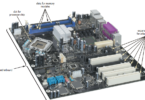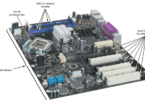Difference Between Servers and Mainframes
Summary: Difference Between Servers and Mainframes is that a A server controls access to the hardware, software, and other resources on a network and provides a centralized storage area for programs, data, and information. And a mainframe is a large, expensive, powerful computer that can handle hundreds or thousands of connected users simultaneously. Mainframes store huge amounts of data, instructions, and information.

Servers
A server controls access to the hardware, software, and other resources on a network and provides a centralized storage area for programs, data, and information. Servers support from two to several thousand connected computers at the same time.
People use personal computers or terminals to access data, information, and programs on a server. A terminal is a device with a monitor, keyboard, and memory.
Mainframes
A mainframe is a large, expensive, powerful computer that can handle hundreds or thousands of connected users simultaneously. Mainframes store huge amounts of data, instructions, and information. Most major corporations use mainframes for business activities. With mainframes, enterprises are able to bill millions of customers, prepare payroll for thousands of employees, and manage thousands of items in inventory. One study reported that mainframes process more than 83 percent of transactions around the world.
Servers and other mainframes can access data and information from a mainframe. People also can access programs on the mainframe using terminals or personal computers.
More Confusing Differences:
Difference Between Advantages and Disadvantages of Using Computer
Difference Between Personal Computers and Mobile Devices
Difference Between Personal Computers and Game Consoles







Leave a Comment
You must be logged in to post a comment.